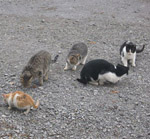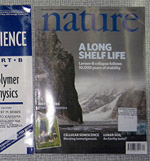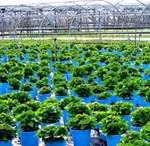The challenge of managing disease in wildlife: the case of elk in Yellowstone
 Mammals,
Mammals,  Protected Areas
Protected Areas  Wyoming Game and Fish (WGFD) employees place a GPS collar on an elk (Cervus canadensis) at the South Park feeding ground outside of Jackson, Wyoming. Image credit: Mark Gocke (WGFD).The disease brucellosis is surging in free-ranging elk populations in the Greater Yellowstone Ecosystem according to a new study in the journal Ecological Applications.
Wyoming Game and Fish (WGFD) employees place a GPS collar on an elk (Cervus canadensis) at the South Park feeding ground outside of Jackson, Wyoming. Image credit: Mark Gocke (WGFD).The disease brucellosis is surging in free-ranging elk populations in the Greater Yellowstone Ecosystem according to a new study in the journal Ecological Applications.
Furthermore, efforts to address the problem by reducing the density of elk populations through increased hunting or introduction of natural predators will be difficult given the matrix of private and public lands where elk aggregate.
The highly contagious disease, caused by the bacteria Brucella abortus, causes spontaneous abortions and can be potentially transmitted from elk to cattle - hence the particularly intense attention given to the problem.
Unfortunately, elk conservation efforts have been falling victim to their own success. By the early 1900's elk numbers were dwindling due to over harvesting and habitat loss. To aid recovery and reduce contact with cattle during the winter, supplemental feeding grounds were established. It was within these dense aggregations of elk that brucellosis emerged as a problem, while prevalence of the disease was very low in herds outside these feeding areas.
However, as Paul Cross and study co-authors have shown, the prevalence of brucellosis has been increasing rapidly in free-ranging elk aggregations located in other parts of the Greater Yellowstone Ecosystem while holding steady within the feeding grounds.
They also found that prevalence of the disease was related to the density of elk herds. Using modeling they showed that increased prevalence is likely not the result of elk dispersing from the supplemental feeding areas. This has serious implications for elk herds in neighboring Montana and Idaho where numbers have been increasing and some winter aggregations can have high densities.
These results also highlight the challenges of managing disease outbreaks in wildlife populations recovering after years of decline. Efforts to control the disease in elk have been focusing on the supplemental feeding areas. However the free-ranging herds with increased disease prevalence roam across a more complex matrix of public and private lands.
This complicates potential solutions for thinning elk populations to reduce density. Hunters often do not have access to private lands. So allocating more hunting permits might not affect elk herds aggregating on private property. Introducing natural predators such as wolves is another approach. However private landowners largely oppose these wildlife introductions due to perception of potential economic losses and public safety issues.
Given the challenge, the authors recommend that managers pursue "agency–landowner hunting access partnerships to target high ungulate densities in private refuges and reduce the current and future burden of disease." They also call for increased protection of large predators such as wolves and grizzly bears.
--Reviewed by Rob Goldstein
Cross, P., Cole, E., Dobson, A., Edwards, W., Hamlin, K., Luikart, G., Middleton, A., Scurlock, B., & White, P. (2010). Probable causes of increasing brucellosis in free-ranging elk of the Greater Yellowstone Ecosystem Ecological Applications, 20 (1), 278-288 DOI: 10.1890/08-2062.1




Reader Comments